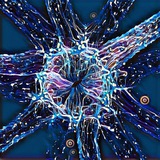group-telegram.com/neural_cell/204
Last Update:
tasty neuro bci papers - october 2024
[3/4]
Synthetic touch for brain-controlled bionic hands: tactile edges and motion via patterned microstimulation of the human somatosensory cortex
what: complex touch sensations using patterned brain stimulation. Participants felt edges, shapes, and motion.
- Uses multiple electrodes firing in patterns in somatosensory cortex (S1)
- Creates edge and shape sensations
- Controls motion direction and speed
- Winner of BCI AWARD 2024
video: https://youtu.be/ipojAWqTxAA
Measuring instability in chronic human intracortical neural recordings towards stable, long-term brain-computer interfaces
what: metric to track distribution shift
- apply KL divergence for neural recording
- show that it's well correlated with decoder performance.
- good thing to track moment of recalibration.
link: https://www.nature.com/articles/s42003-024-06784-4
Accurate neural control of a hand prosthesis by posture-related activity in the primate grasping circuit
what: hand prosthetic control using neural posture signals instead of traditional velocity. Achieves precision grip control in macaques.
- Uses posture transitions vs standard velocity control
- Works with 3 brain areas (AIP, F5, M1)
- Matches natural hand control patterns
link: https://www.cell.com/neuron/abstract/S0896-6273(24)00688-3
my thoughts
Shift from "feeling dots" to "feeling objects" is amazing. That's like upgrading from morse code to actual writing for touch sensations. For sure, it's not perfect and we have to continue. In my view we should focus on "smart" stimulation. Which can use diverse feedback from participant. Maybe mix of RL and SFT.
Measuring changes in the neural recording is must have in any bci application. KL div is good starting point. however, plots show smooth performance degradation. So potentially we could capture this shift day by day and somehow fix it. For example, it's interesting to consider "stabilizer model" which should to match shifted data into original distribution. Flow matching, diffusion, or just AE with KL loss.
BY the last neural cell
Warning: Undefined variable $i in /var/www/group-telegram/post.php on line 260
Share with your friend now:
group-telegram.com/neural_cell/204
